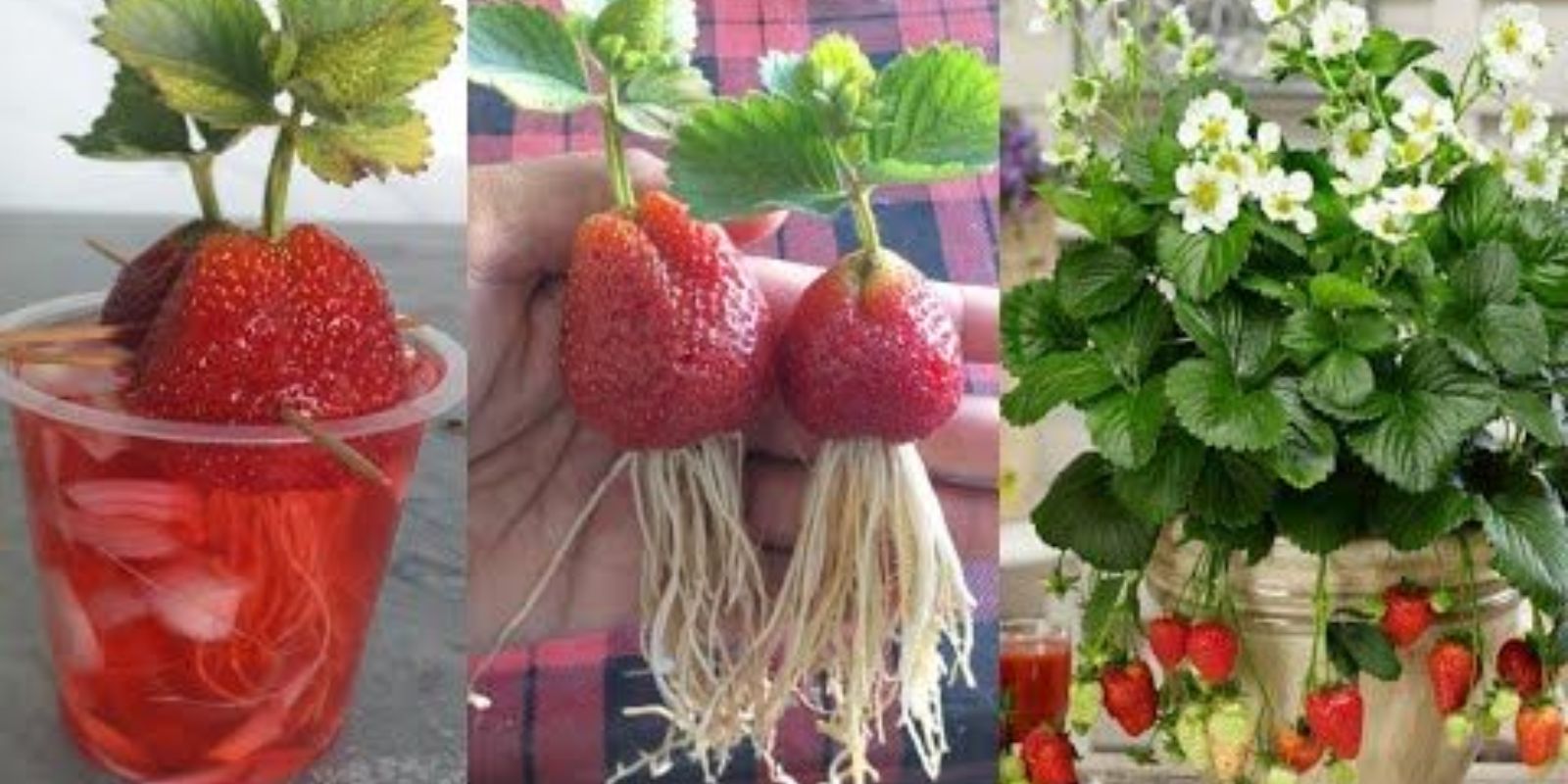Growing strawberries at home is a delightful way to enjoy sweet, juicy berries right from your garden or even your balcony. Strawberries are not only delicious but also relatively easy to grow, making them an excellent choice for both beginner and experienced gardeners. This article will guide you through the essential steps to successfully cultivate strawberries at home, from selecting the right variety to harvesting your first crop.
Why Grow Strawberries at Home?
Strawberries are a popular fruit known for their vibrant color, sweet flavor, and versatility in recipes. Growing them at home offers several benefits:
- Freshness: Home-grown strawberries are fresher and often tastier than store-bought ones, as they can be picked at their peak ripeness.
- Cost-Effective: Growing your own strawberries can save money in the long run, especially if you frequently buy them.
- Organic Control: By growing strawberries yourself, you have control over the use of pesticides and fertilizers, allowing you to grow them organically.
- Space Efficiency: Strawberries can be grown in containers, hanging baskets, or garden beds, making them suitable for various space constraints.
Choosing the Right Strawberry Variety
Selecting the right variety is crucial for a successful strawberry harvest. There are three main types of strawberries:
- June-Bearing: These produce a large crop of berries in late spring to early summer. They are ideal if you want a concentrated harvest and have the space for a larger planting.
- Everbearing: These produce two to three smaller crops throughout the growing season, typically in spring, summer, and fall. They are great for extended harvest periods and smaller spaces.
- Day-Neutral: These produce fruit continuously throughout the growing season, regardless of day length. They are perfect for gardeners who want a steady supply of strawberries.
Consider your local climate, growing space, and personal preferences when choosing a variety.
Preparing the Soil
Strawberries thrive in well-draining soil enriched with organic matter. Here’s how to prepare the soil for planting:
- Choose a Location: Strawberries need full sun for at least 6-8 hours a day. Select a spot with good air circulation to reduce the risk of fungal diseases.
- Test and Amend the Soil: Strawberries prefer slightly acidic soil with a pH of 5.5 to 6.8. Test your soil’s pH and amend it if necessary. Add compost or aged manure to improve soil fertility and drainage.
- Prepare the Soil Bed: Loosen the soil to a depth of about 12 inches and mix in organic matter. This helps create a loose, well-draining environment for the roots.
Planting Strawberries
Once your soil is ready, it’s time to plant your strawberries. Follow these steps for successful planting:
- Timing: The best time to plant strawberries is in early spring or late summer, depending on your climate. Planting in spring allows the plants to establish before summer heat, while planting in late summer gives them a head start for the next growing season.
- Spacing: Space your strawberry plants 12-18 inches apart to allow room for growth. If planting in rows, space the rows about 2-3 feet apart.
- Planting Depth: Plant strawberries at the same depth they were growing in their pots. The crown (where the roots meet the stems) should be level with the soil surface. Planting too deep can cause the crown to rot, while planting too shallow can expose the roots.
Caring for Your Strawberry Plants
Proper care is essential to ensure healthy plants and a bountiful harvest. Here are some key care tips:
- Watering: Keep the soil consistently moist but not waterlogged. Strawberries have shallow roots, so they need regular watering, especially during dry spells. Water at the base of the plants to avoid wetting the leaves, which can lead to fungal diseases.
- Mulching: Apply a layer of mulch around the plants to help retain moisture, suppress weeds, and keep the fruit clean. Straw, wood chips, or black plastic mulch are good options.
- Fertilizing: Strawberries benefit from regular feeding. Use a balanced, slow-release fertilizer or an organic option like compost or fish emulsion. Fertilize in early spring as new growth begins and again after the first harvest to encourage continued fruiting.
- Pruning and Training: Remove any runners (long, horizontal stems) if you want to focus on producing larger fruit. For everbearing and day-neutral varieties, allow some runners to develop if you want to propagate new plants. Trim dead or damaged leaves as needed.
Managing Pests and Diseases
Strawberries can be susceptible to pests and diseases. Here’s how to manage common issues:
- Pests: Watch for pests like aphids, spider mites, and slugs. Use organic pest control methods such as insecticidal soap, neem oil, or hand-picking. For slugs, use barriers or natural predators like birds.
- Diseases: Fungal diseases like powdery mildew and leaf spot can affect strawberries. Ensure good air circulation by spacing plants properly and avoid overhead watering. Remove and dispose of infected plant parts to prevent the spread of disease.
Harvesting Strawberries
Harvesting is the most exciting part of growing strawberries! Here’s how to know when your strawberries are ready to pick:
- Ripeness: Strawberries are ready to harvest when they are fully red and have a glossy appearance. They should be firm but slightly soft to the touch.
- Picking: Gently twist or cut the strawberries from the plant, leaving the green caps attached. Avoid pulling the fruit, as this can damage the plant.
Conclusion
Growing strawberries at home is a rewarding and enjoyable gardening activity. By following these steps—choosing the right variety, preparing the soil, planting, caring for the plants, and managing pests—you can cultivate a bountiful crop of fresh, delicious strawberries. Whether you have a spacious garden or a small balcony, there’s a strawberry variety and planting method to suit your space.
Have you tried growing strawberries at home? Share your experiences, tips, or questions below! Let’s cultivate a passion for gardening and enjoy the sweet rewards of home-grown fruit together.

